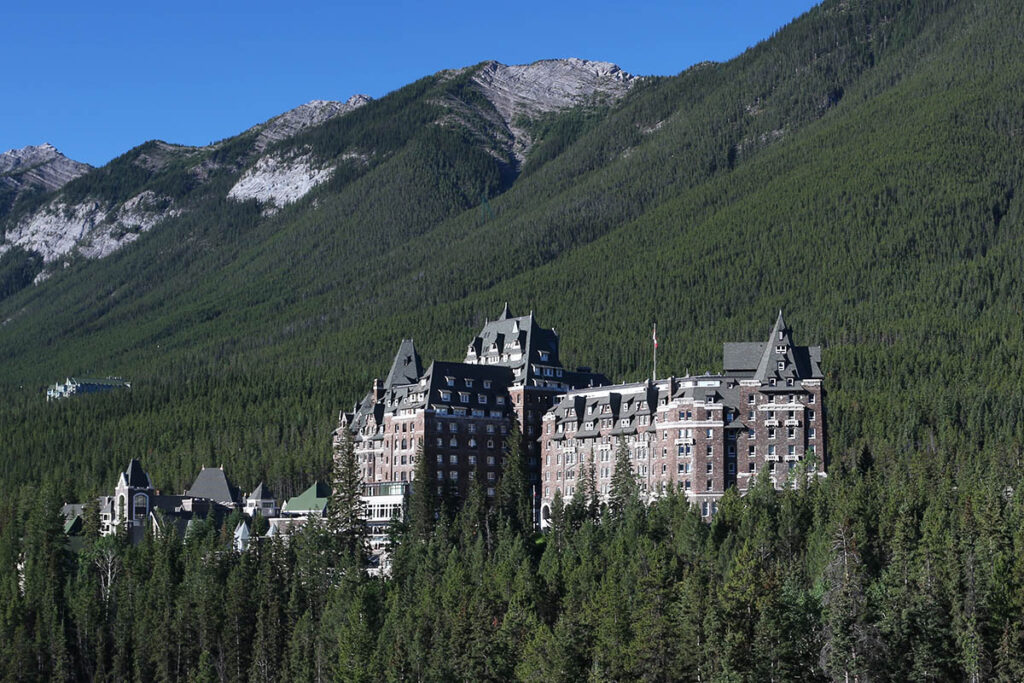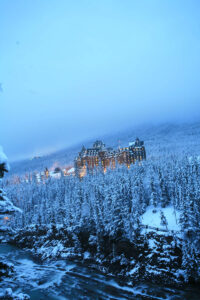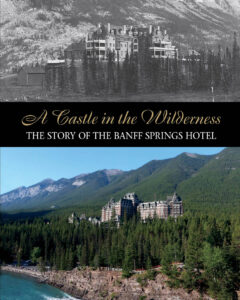Fairmont Banff Springs Hotel History
Fairmont Banff Springs Hotel’s history begins with the railway and today “The Springs” has grown with the town and is an integral part of local history.
William Cornelius Van Horne, vice president of the CPR, decided that the best way of encouraging customers to travel on his newly completed rail line across the Rockies was to build a series of luxurious mountain accommodations. The largest of these was begun in 1886, as close as possible to Banff’s newly discovered hot springs. The location chosen had magnificent views and was only a short carriage ride from the train station. Money was no object, and architect Bruce Price began designing a mountain resort the likes of which the world had never seen. At some stage of construction his plans were misinterpreted, and much to Van Horne’s shock, the building was built back to front. The best guest rooms faced the forested slopes of Sulphur Mountain while the kitchen had panoramic views of the Bow Valley. On June 1, 1888, it opened, the largest hotel in the world, with 250 rooms beginning at $3.50 per night including meals. Water from the nearby hot springs was piped into the hotel’s steam baths. Rumor has it that when the pipes blocked, water from the Bow River was used, secretly supplemented by bags of sulphur-smelling chemicals. Overnight, the quiet community of Banff became a destination resort for wealthy guests from around the world, and the hotel soon became one of North America’s most popular accommodations. Every room was booked every day during the short summer seasons.

Fairmont Banff Springs from Surprise Corner.
In 1903, a wing was added, doubling the hotel’s capacity. The following year a tower was added to each wing. Guest numbers reached 22,000 in 1911, and construction of a new hotel, designed by Walter Painter, began that year. The original design—an 11-story tower joining two wings in a baronial style—was reminiscent of a Scottish castle mixed with a French country chateau. This concrete-and-rock-faced, green-roofed building stood as it did at its completion in 1928 until 1999, when an ambitious multiyear program of renovations commenced. At first, the most obvious change to those who have visited before is the new lobby, moved to a more accessible location, but all rooms have also been refurbished, and many of the restaurants changed or upgraded.

Fairmont Banff Springs in winter.
The Canadian Pacific moniker remained part of the Banff Spring’s official name until 2000, when the hotel, and all other Canadian Pacific hotels, became part of the Fairmont Hotels and Resorts chain. Don’t let the hotel’s opulence keep you from spending time here. Wander through, admiring the 5,000 pieces of furniture and antiques (most of those in public areas are reproductions), paintings, prints, tapestries, and rugs. Take in the medieval atmosphere of Mount Stephen Hall, with its lime flagstone floor, enormous windows, and large oak beams; take advantage of the luxurious spa facility; or relax in one of 12 eateries or four lounges.
Banff Springs Hotel History Book
A Castle in the Wilderness: The Story of the Banff Springs Hotel by Bart Robinson is the definitive historical record of the Banff Springs Hotel. The book navigates the hotel’s early history from its construction by the Canadian Pacific Railway to the glittering era of the 1920s through to the changes of modern times.
Local author and historian Bart Robinson has been exploring and writing about the Banff Springs Hotel since the 1970s. In A Castle in the Wilderness, he combines a complete hotel history with rich anecdotes and snippets of the past that have enriched Banff and indeed Canada, from the hotel’s links to the construction of the transcontinental rail line to the visits of maharajahs and movie stars.
How did such a gracious hotel come to be in the wilds of the Canadian Rockies? How much did it cost to build? Who designed it? Who selected its furnishings? Which famous visitors has it hosted? And why is now known as the Fairmont Banff Springs? These and many more questions are answered in A Castle in the Wilderness.
